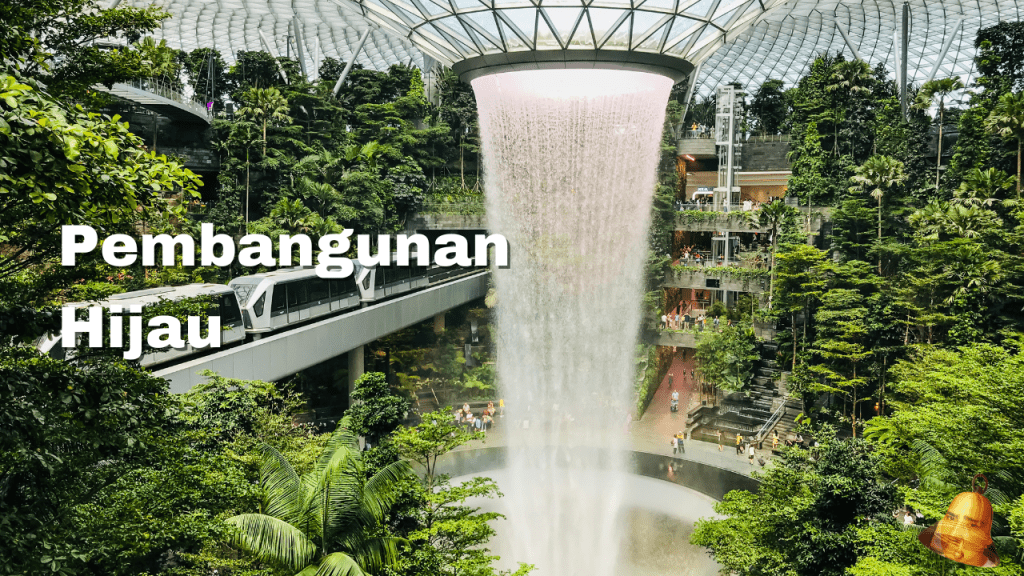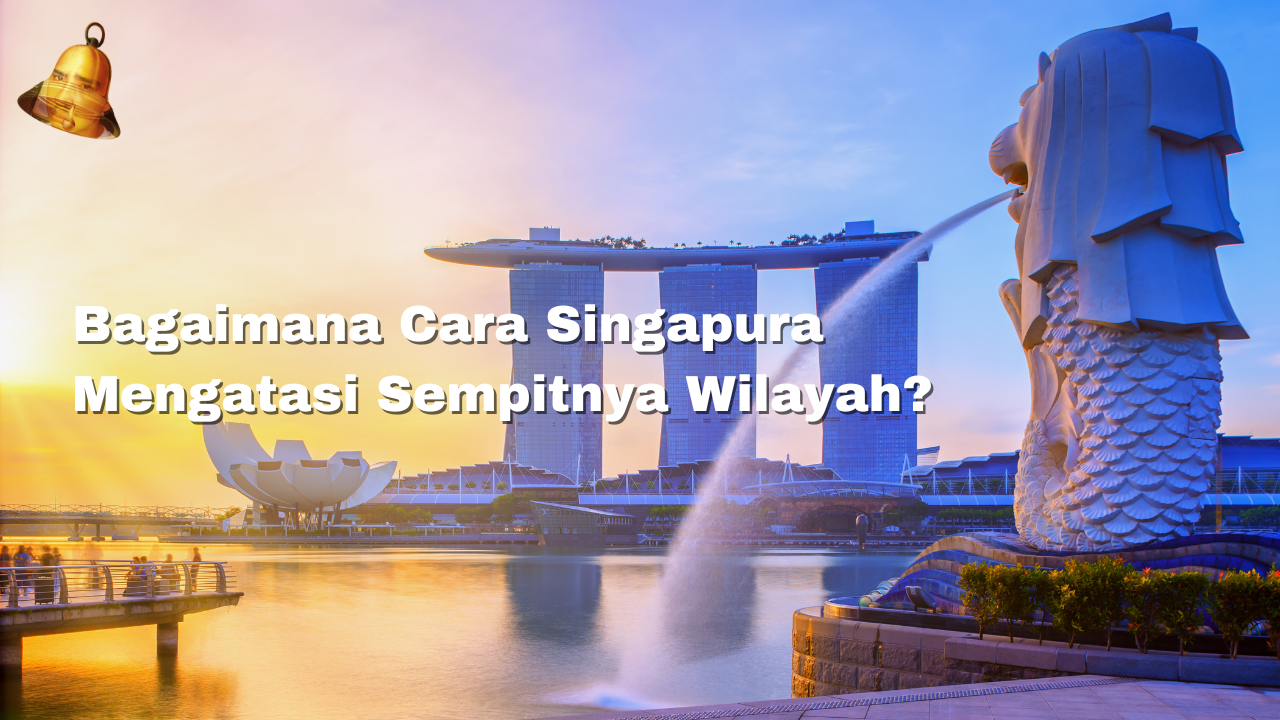Singapore is a country in Southeast Asia which has a very small area, only around 693 km². However, this country is a developed country that has a dense population and a developing economy. So, how does Singapore overcome its limited territory? Check out the explanation below.
- Reclamation
Reclamation is the process of adding land by building additional land above the sea. Singapore carried out reclamation to increase its territory without disturbing the territory of neighboring countries. With reclamation, Singapore can utilize additional land for various purposes, such as housing, industry and tourism. According to data from Geospatial World, Singapore’s area increased by around 25% from 1960 to 2018 due to reclamation. - Vertical Development
Vertical development is a strategy to utilize space upwards by building tall buildings. Singapore implemented this strategy to save land and accommodate many people in one building. Tall buildings in Singapore can function as offices, apartments, hotels, shopping centers and other public facilities. According to data from Emporis, Singapore has around 4,300 tall buildings with a height of more than 35 meters. - Land Savings
Land saving is a way to reduce inefficient land use and optimize the use of existing land. Singapore saves land by improving the function of space in buildings, using advanced technology, and reducing land requirements for transportation. For example, Singapore has an efficient and environmentally friendly public transportation system, such as the MRT, LRT, buses and taxis. With this public transportation, you don’t need to have a private vehicle that requires space for parking. - Green Development
Green development is a way to develop cities without sacrificing the environment and community welfare. Singapore implements green development by preserving green spaces in the city center, such as parks, urban forests and zoos. Apart from that, Singapore also builds environmentally friendly buildings that have designs and facilities that save energy and water. With this green development, Singapore can maintain the air quality and climate of the city.
These are some of the ways Singapore has taken to overcome its limited territory. With these strategies, Singapore has succeeded in creating a modern, comfortable and sustainable city. For a more detailed explanation, see below!
Reclamation

Reclamation is the process of adding new land by filling in the surrounding waters. Singapore is one of the countries that has carried out a lot of reclamation because it has limited land area and rapid economic growth. Reclamation in Singapore began in the 19th century and has become more intense since the 1960s. Until 2010, Singapore managed to increase its land area by 25 percent from 580 square km to 760 square km.
Reclamation in Singapore is carried out in various ways, such as importing stone, cement and sand from neighboring countries, draining wetlands and combining reclaimed islands into large plains. Reclamation in Singapore aims to meet the needs of the population, port, trade, industry and government which continue to grow. Reclamation is also used to preserve local history and culture.
Reclamation in Singapore has advantages and disadvantages. The advantage of reclamation is that it can increase the capacity and quality of the Singapore region for various purposes. Reclamation can also increase the income and welfare of the Singaporean people. The disadvantage of reclamation is that it can have negative impacts on the environment, such as damage to marine ecosystems, coastal erosion, water pollution and microclimate changes. Reclamation can also cause conflict with neighboring countries, such as Indonesia, due to maritime boundary issues and natural resources.
Vertical Development

Vertical development is a strategy for building tall buildings that can accommodate many functions in one location. Vertical development is usually carried out in large cities which have limited land and high population density. Singapore is an example of a country that implements vertical development intensively.
In Singapore, vertical development does not only include office buildings or shopping centers, but also housing, social facilities and public spaces. One of the famous vertical development projects in Singapore is Kampung Admiralty , which is an integrated complex that provides residential, health, education, recreation and commercial in one building. This concept aims to create a harmonious and inclusive community in the middle of a dense city.
In general, vertical development has several advantages or benefits, including:
- Save land and reduce unproductive land use.
- Increase efficiency and mobility by connecting various functions in one location.
- Reduce air pollution and carbon emissions by reducing transportation needs.
- Creates a city icon and increases aesthetic value.
However, vertical development also has several disadvantages, including:
- Requires high costs for development and maintenance.
- Causing social problems such as inequality, isolation, and loss of identity.
- Increases the risk of disasters such as earthquakes and fires.
- Reduce green open space and sunlight.
Land Savings

Singapore is a country known for its limited land. Therefore, the government and people of Singapore are trying to save land in various ways. One example of detailed land savings is the construction of Tuas Nexus, an integrated water and solid waste treatment plant. This project combines two previously separate facilities, namely the Tuas Water Reclamation Plant and the Integrated Waste Management Facility. Thus, this project can save up to 2.6 hectares of land, the equivalent of four football fields.
Apart from that, this project can also reduce carbon dioxide emissions by 200 thousand tonnes per year, equivalent to removing 42.5 thousand cars from Singapore’s roads. Another example of land savings is the merger of MRT and bus depots in Singapore. Singapore’s Coordinating Minister for Infrastructure Khaw Boon Wan said that if the MRT and bus depots were built separately, additional land of up to 44 hectares would be needed, or twice the area of Changi Airport Terminal 4. By combining the MRT and bus depots, Singapore can save a budget of IDR 20 trillion.
Another example is the development of vertical farming in Singapore. Because land in Singapore is not large, the government and people of Singapore use building roofs to grow vegetables and garden produce that can be sold. This strategy is already starting to bear fruit, as Singapore can increase its local food production. Apart from vertical farming, Singapore is also developing the concept of a zero waste nation or a country without waste. Singapore managed to recycle 4.25 million tons of solid waste in 2019, and plans to increase this figure with various programs and innovations.
The advantages or benefits of saving land in Singapore are as follows:
- Reducing dependence on food and energy imports from abroad
- Improving environmental quality and public health
- Encourage sustainable economic and social growth
- Maintain national security and territorial sovereignty
The disadvantages or challenges of saving land in Singapore are as follows:
- Requires large costs for investment and operations
- Requires good cooperation between government, private sector and society
- Facing technical and non-technical risks that can disrupt the land saving process
- Requires changes in community behavior and culture that are in accordance with the concept of saving land
Green Development

Green development is a concept that integrates environmental, social and economic aspects in the planning, design, construction, operation and maintenance of buildings. Green development aims to reduce negative impacts on the environment and human health, as well as improve the quality of life and welfare of society.
Singapore is one of the countries that is actively implementing green development in various sectors, especially housing, transportation and tourism. Some examples of green buildings in Singapore are:
- Jewel Changi Airport : This airport has the world’s highest indoor waterfall that can collect rainwater from storms for reuse. This airport is also equipped with 2,000 trees and 100,000 shrubs so that it can create a green ecosystem in the middle of the city.
- Oasia Hotel Downtown : This hotel has a red facade covered in greenery and climbing flowering plants. The hotel also has four sky terraces providing a lush setting, as well as a cross ventilation system that reduces energy costs.
- Marina Bay Sands : This hotel has a ship-shaped roof that houses the world’s longest swimming pool, two hectares of green gardens, and solar panels that generate electricity for the hotel. The hotel also uses a wastewater and rainwater recycling system to water plants and clean facilities.
- Gardens by the Bay : This garden has 18 giant artificial trees covered with tropical and subtropical plants. These trees also function as rainwater catchers, wind distributors, and solar power generators. The park also has two giant domes that mimic the Mediterranean climate and a tropical rainforest.
- School of the Arts (SOTA) : This school has a building design that maximizes natural lighting, air circulation and greenery. This school also has a roof that functions as an open learning space, garden and arts performance venue. This school also uses a rainwater collection system and wastewater purifier for sanitation purposes.
Data regarding green development in Singapore can be seen from the following indicators:
- Percentage of green buildings to total buildings: 43% in 2020.
- Energy savings due to green development: 19,200 GWh or equivalent to 10.4 million tonnes of carbon dioxide emissions in 2020.
- Water savings due to green construction: 39 million cubic meters or the equivalent of 15,600 Olympic swimming pools in 2020.
- Environmental Performance Index (EPI): 85.6 or fourth in the world in 2020.
That’s a complete explanation of how Singapore can overcome its limited territory, how? Do you understand or not hehe, I hope this article can help! See you~
Writer and proudly owner of Diringkas.com!
I like to Staying up-to-date with the latest tech advancements, playing video games, discovering new games, and writing about them.

